Things bakers know: You can reuse parchment more than you think
Put that parchment to use again and again and …
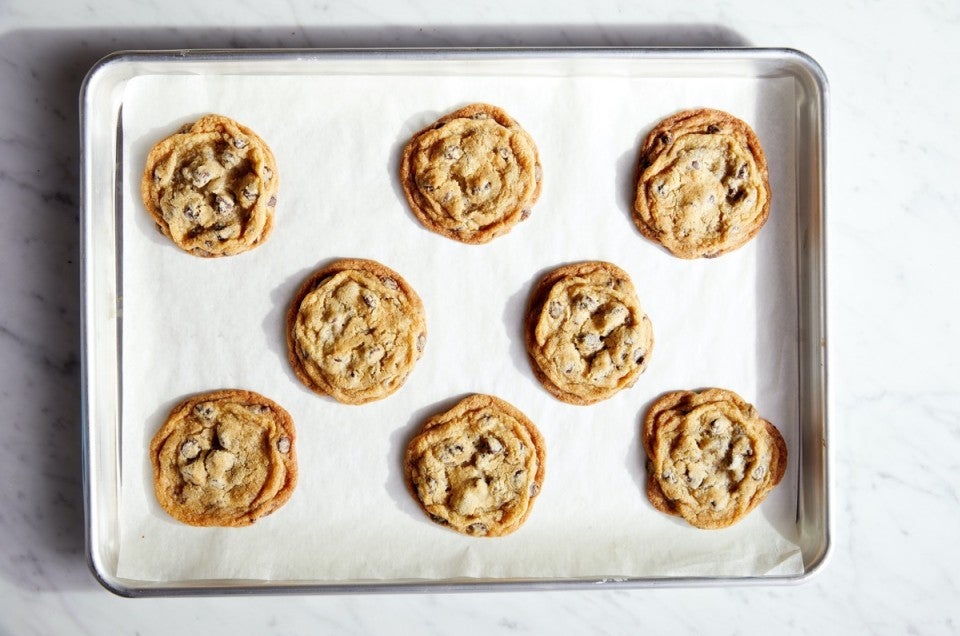

Did you know you can reuse parchment paper? Not just once, but over and over until it almost falls apart in your hands, or becomes so old and stained you simply can’t bear to look at it anymore. For getting your money’s worth out of a product (and reducing waste at the same time), reusing your baking parchment is one of the simplest, most common-sense steps you can take in the kitchen.
But hold on: Why bother with reusing parchment when you can easily recycle or compost it? After all, it’s paper, isn’t it?
Well, yes, but parchment paper includes a thin coating of silicone, which makes it water-resistant, nonstick, temperature-resistant — and not a candidate for recycling. Because silicone isn’t easily separated from the paper itself, coated parchment isn’t recyclable (or compostable, either).
Not recyclable, not compostable — this is why you want to use each sheet of parchment as many times as possible before adding it to your local landfill. Part of environmental sustainability is keeping waste to a minimum, and reusing parchment is one way you can help do your part. (Another way? Ditch the plastic wrap!)
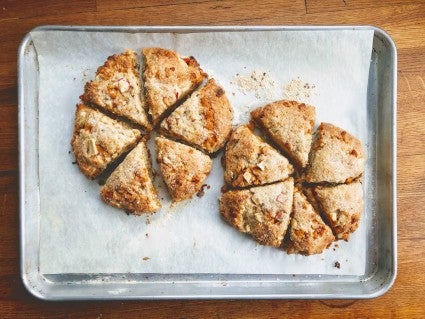
First rule of thumb: Be sensible. Food safety matters, and you don’t want to reuse parchment that’s held meat or fish, even if you think it looks pretty clean. So, bakin’ the bacon? Discard that parchment!
Exposure to dairy is another story. If you use a parchment-lined baking sheet to bake cookies, scones, biscuits, dinner rolls, or anything else with milk, eggs, and/or butter, your parchment will carry traces of those ingredients when you’re done baking. Thankfully, baking at temperatures above 250°F kills the potential bacteria from fresh ingredients in your raw dough or batter, so any residue left on the parchment after baking should be bacteria-free.
On the other hand, if you use parchment strips to catch the messy smears of frosting at the edge of your layer cake, it’s probably best to discard those. Without exposure to heat, any milk or butter from the frosting remaining on the parchment after its wipe-down could prove problematic.
Along the same lines, if you use a sheet of parchment to roll out pie crust or knead bread dough (even a non-dairy dough) and then don’t bake on that parchment fairly soon (within a couple of hours), it shouldn’t be reused.
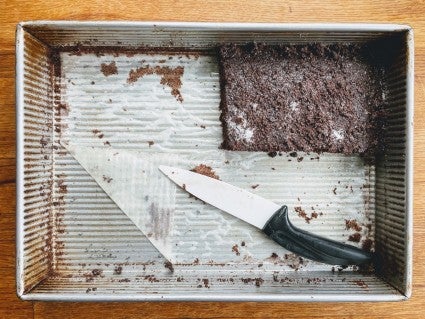
What about parchment you’ve used to bake a cake, brownies, bars, or other batter-based confections? Since it’ll no doubt be coated with the sticky residue of your cake or bars, as well as quite soggy, it would be hard to clean completely; best to discard.
Bottom line: Reuse parchment only if it’s been baked on (rather than used in raw dough preparation and shaping); and only if it’s easy to wipe clean: which means no reusing parchment puddled with sticky, burned apple pie spillover!
You’ve baked a batch of chocolate chip cookies on a fresh piece of parchment, and the parchment is marked with circular grease stains where the cookies rested, and perhaps some melted chocolate and a scattering of crumbs. Can this parchment be saved?
Absolutely. Simply wipe it down with a damp paper towel or, even better, a reusable bamboo-fiber cloth. (Heads up: At King Arthur, we only recommend the products that we, as bakers, truly love. When you buy through external links on our site, we may earn an affiliate commission.)
Store used parchment where it’ll get plenty of exposure to fresh air; this will help prevent the buildup of odors. I like to store my used parchment atop my stack of half-sheet pans; it’s out of the way, yet easy to grab when you need it.
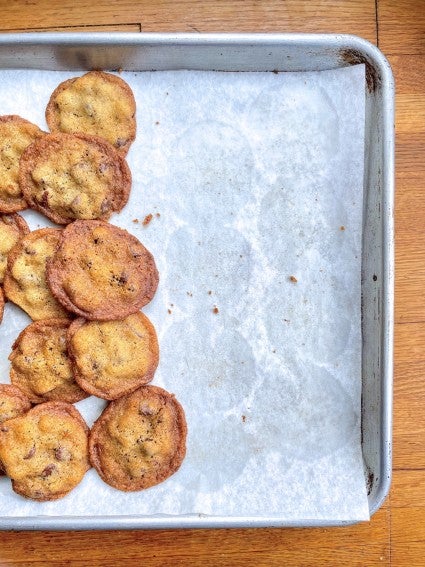
It depends on how heavily it’s been used along the way. Parchment that’s simply placed under bagels or other simple yeast breads can be used until it becomes brittle and starts to fall apart. Parchment that holds baking cookies or other treats with more fat will eventually become quite greasy, despite your efforts to wipe it clean; when this happens (or when you can smell it), throw it out.
Parchment used for pizza or some crusty breads is often exposed to super-high temperatures, upwards of 450°F in some cases. Though the parchment may darken and even char on its exposed edges, it’s still fine to reuse. Keep in mind, though, parchment used in high-temperature baking will deteriorate faster than parchment used at lower temperatures; when it starts to crumble around the edges, discard it.
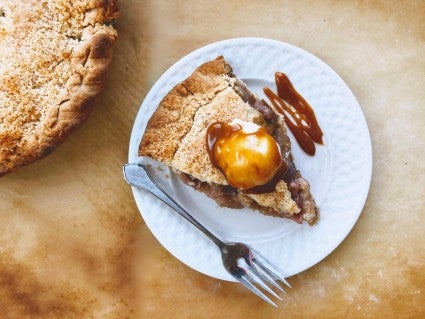
Speaking of charred or simply darkened parchment, even when you no longer want to use it for baking you still don’t have to throw it away: It makes a handsome, rustic-type background for Instagram photos of your favorite baked treats!
“Use it up, wear it out, make it do, or do without” — this was Americans’ mantra during World War II. What do you do today to reduce waste in your kitchen? Please add your best recycling/reuse tips in “comments,” below.
Cover photo (Now or Later Pizza Crust) by Kristin Teig.

